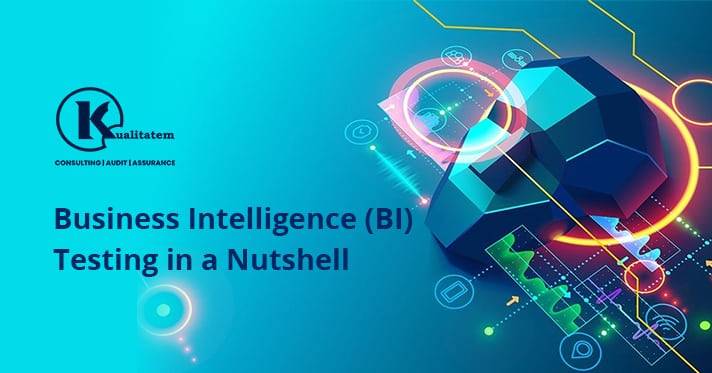Business Intelligence (BI) Testing in a Nutshell

- February 28, 2020
- HibaSulaiman
Business intelligence is used to make business decisions and strategy through transforming, analyzing, and gathering raw data into meaningful information. BI or business intelligence testing helps companies get detailed and better on data that helps the companies to make better decisions. Over time, however, the way this testing is performed has changed. This has proved to be beneficial for both users and businesses since increased clarity and improved software testing tools enable businesses to provide users with a better experience with the software.
Business Intelligence
Business intelligence itself is a collection of components, applications, and technologies that make the entire implementation. It can’t be achieved through any particular system or software testing tools. Following is the sequence of flow of events:
- User transactional data
- Record or data formats
- ETL
- Data warehouse
- Datamart
- OLAP
- BI
Therefore, the entire flow must be tested while testing business intelligence, right from the time when you get the data from the source until the very end.
BI Testing Sequence
1. Testing the source data
There are various data formats and sources for the business data. So, there must be a validation to verify that the source data matches the data that is being sent. This is the extract stage of the ETL.
2. Testing data transformation
This is where the raw data is transformed into business targeted information.
- Format of destination and source data should be the same
- Default values, foreign key, and primary key must be intact
- ACID properties must be validated
3. Test data loading
The permanent data location must be tested, whether it is a data warehouse or data mart. The actual script that loads the data should also be included in ETL testing. The data storage system must also be validated for the following:
Performance: The system complexity increases as it becomes more intricate. Therefore, it must be checked for its performance.
Scalability: With the growing data and business volumes, it is important to ensure that increasing data is handled by the current system in place.
4. Testing BI report
Consider the following factors when testing BI reports:
- The applicability of report to the business
- Grouping, sorting, customization, etc. in reports
- The report readability
- Integration of BI elements
Growing complexity in the IT industry calls for solutions that enable businesses to make intelligent decisions. This is where QA steps in. BI solution’s quality is dependent upon the quality of the value and data provided of the findings it delivers. Data credibility can be ensured with the help of effective testing through a comprehensive test strategy that includes test planning, infrastructure, and QA teams, business users and developers.
Following BI testing features should be considered while creating tests:
- Business logic
- Complicated architectures
- Data volume and complexity
- Data selection and sources
- Inconsistent DW data
- Changes in the source database
- Changes in business requirements
Advantages of BI testing:
- In-depth BI and technology knowledge
- Fair understanding of the database principles
- Expertise in testing complex data architectures
- Perform non-visual testing or that those are almost intangible











